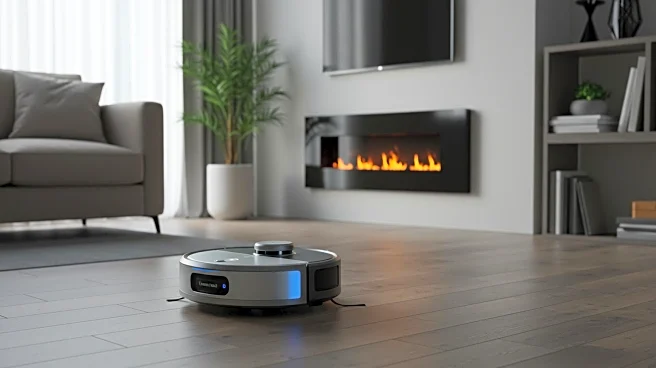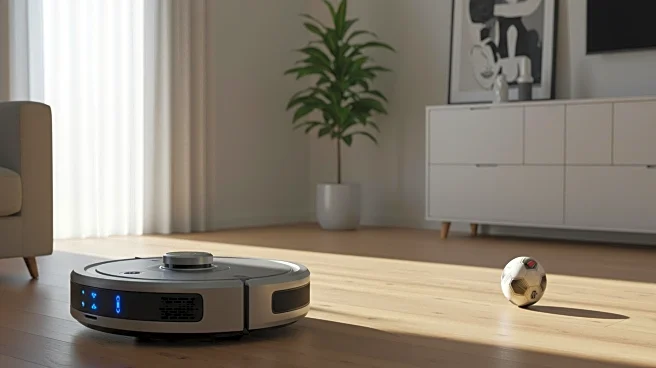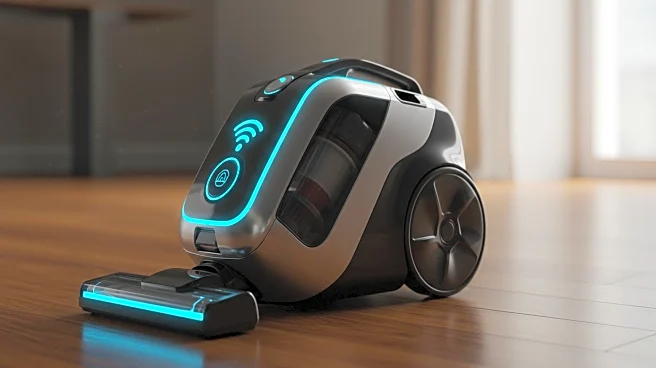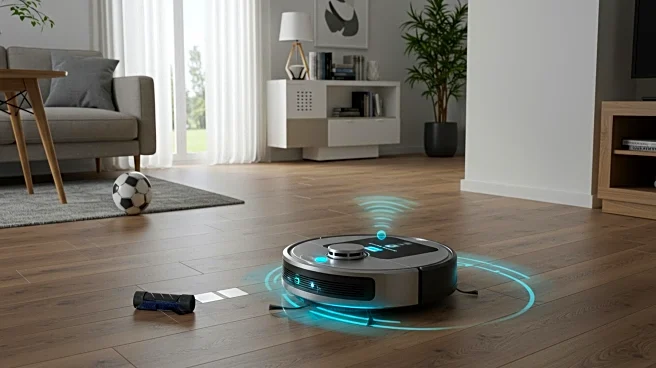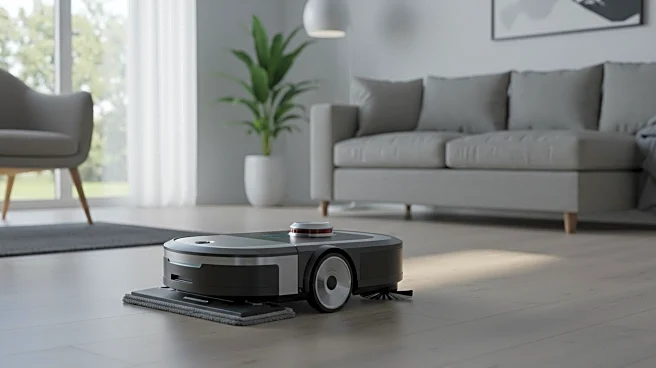What's Happening?
The latest advancements in robot vacuum technology are making home cleaning more efficient and user-friendly. The 2025 models feature enhanced navigation and object detection capabilities, such as LiDAR sensing and AI-object recognition, which allow for a more hands-off cleaning experience. These features, however, can increase the price of the vacuums. The models also come with varying dustbin capacities, with some offering self-emptying base stations for a more automated experience. Brands like Eufy, Roborock, iRobot, and Shark are leading the market with models that cater to different needs and budgets. The Eufy Omni X10 Pro, for instance, combines vacuuming and mopping functions, while the Roborock Q10 X5+ offers an auto-emptying base station for a more hands-off approach.
Why It's Important?
The integration of advanced technologies in robot vacuums signifies a shift towards more automated and efficient home cleaning solutions. This trend is particularly beneficial for busy households and pet owners who require frequent cleaning. The ability to schedule cleanings and set no-go zones through apps adds convenience and customization to the cleaning process. As these technologies become more accessible, they could lead to a decrease in manual cleaning efforts, allowing users to allocate their time to other activities. The market's growth also reflects a broader trend of incorporating AI and automation into everyday household tasks, potentially influencing future developments in home automation.
What's Next?
As technology continues to evolve, future robot vacuums may offer even more sophisticated features, such as improved AI for better obstacle avoidance and more efficient cleaning patterns. Manufacturers might also focus on reducing costs to make these advanced models more accessible to a wider audience. Additionally, there could be an increase in the integration of smart home systems, allowing for seamless interaction between robot vacuums and other smart devices. This could lead to a more cohesive and automated home environment, further enhancing the user experience.
Beyond the Headlines
The rise of robot vacuums also raises questions about data privacy and security, as these devices often rely on cameras and sensors to navigate homes. Ensuring that user data is protected will be crucial as these technologies become more prevalent. Furthermore, the environmental impact of producing and disposing of these devices is another consideration, prompting discussions on sustainable manufacturing practices and recycling programs.


